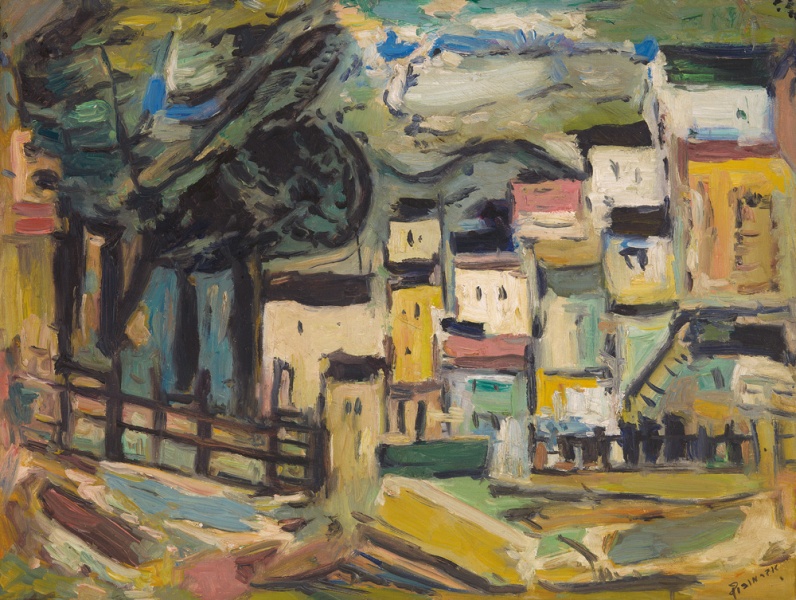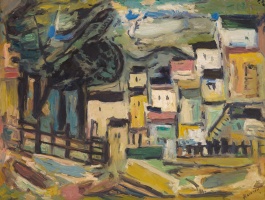
Abstract Landscape in Israel
| Author: |
Pinchus Abramovich (1909–1986)  |
| Created: | ca 1940–1950 |
| Material: | canvas |
| Technique: | oil |
| Dimensions: | 45 × 60 cm |
| Signature: | bottom right: signature |
After his studies, Abramovitch returned to Israel and, under the influence of local traditions, he abandoned realistic imagery. Instead, he indulged his interest in the geometric structures of Iranian and Persian art, adopted their experience, and painted abstract pictures. To these he added cityscapes in which he emphasised the Cubist structure of buildings by impulsive, expressive and colourful brushstrokes.
Text author Nijolė Tumėnienė
Lyrical abstraction and the Promised Land. Whereas for Christians the Promised Land is a symbolic image of the Kingdom of God, for Jews it is a specific geographical place. Canaan is the land ‘between the river of Egypt and the great river Euphrates’ (Genesis 15:18), the present territories of Israel and Lebanon, where God instructed Abraham to live so that he would make him into a ‘great nation’ (Genesis 12, 1–2). For several millennia, Jews lived far away from their homeland. It was not until 14 May 1948 that the Declaration of Independence of the State of Israel was announced in Jerusalem.
The idealistic aspirations of the new state encouraged artists to look for new forms of artistic expression. The Litvak painters Pinchus Abramovich from Mažeikiai and Yehezkel Streichman from Kaunas, who lived in Palestine for several decades and participated in the creation of the State of Israel, founded the group Ofakim Hadashim (New Horizons, 1948–1963), together with Yosef Zaritsky and Avigdor Stematsky, two like-minded artists from Ukraine. Artistic experimentation, Litvak melancholy, and French and Jewish Expressionism, gradually drifting towards Abstraction, led members of the group towards Lyrical Abstraction. Lyrical landscapes of the land of Israel filled with abstract forms became the main motifs in the paintings by this group of artists, symbolising their link with the Promised Land, the Homeland, and the Jewish people.
Text author Vilma Gradinskaitė
Source: Law firm Valiunas Ellex art album THE WORLD OF LANDSCAPES II (2013). Compiler and author Nijolė Tumėnienė, STORIES OF LITVAK ART (2023). Compiler and author Vilma Gradinskaitė
Expositions: "Shalom, Israel! The Paths of Litvak Artists", 16 December 2015 – 13 March 2016, Tolerance Center of the Vilna Gaon State Jewish Museum, Vilnius







